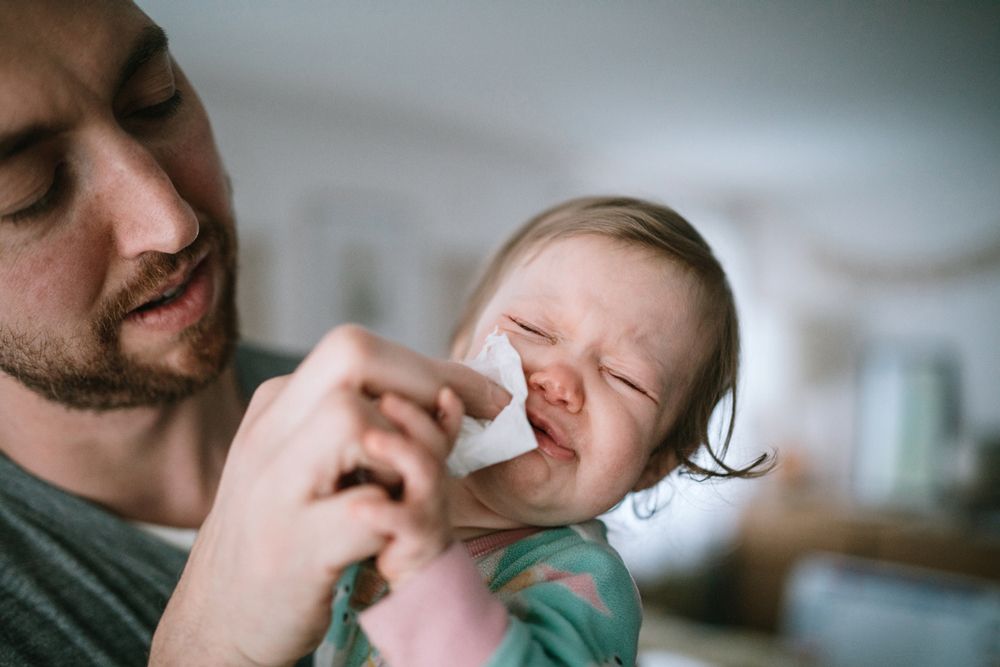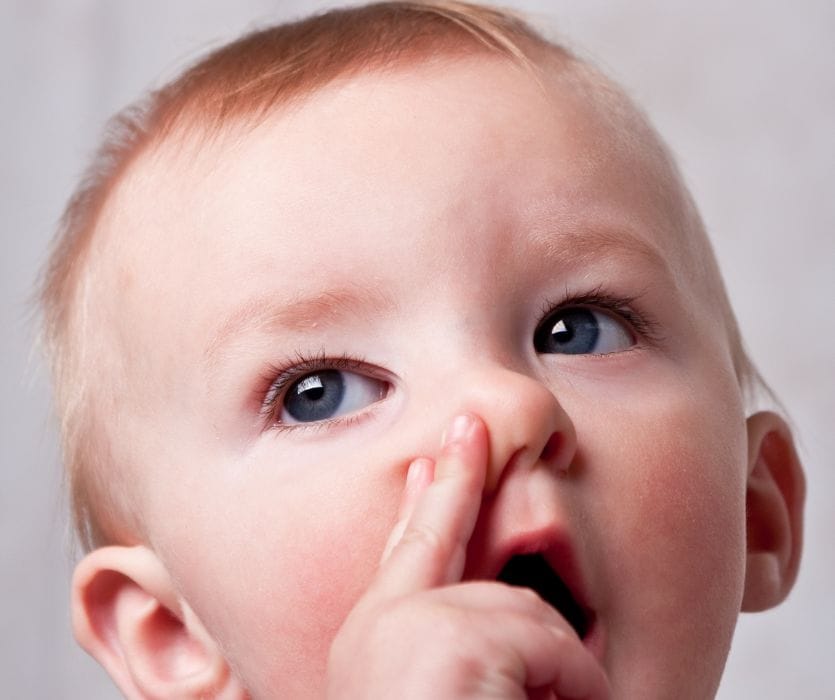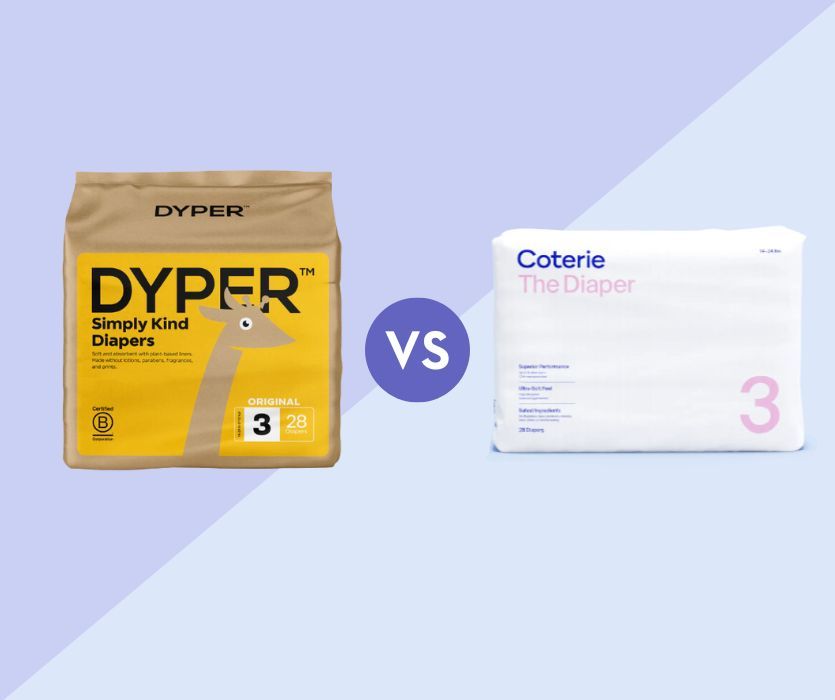We all know kids are tiny germ vectors, arriving home with any number of disgusting illnesses to share with their unsuspecting families. Most are fairly inconsequential in the long run: colds, puke plagues, pink eye, etc. Parental war stories that are remembered mostly for the sheer amount of goop children can produce from various orifices.
Respiratory syncytial virus (RSV) is one childhood illness that has earned a nasty reputation and for good reason.
Most children will have had a run-in with RSV by the time they are two years old. It is a very contagious virus that circulates during the typical cold and flu season. It is largely indistinguishable from the common cold for most healthy children and adults.
Who is at risk for RSV?
RSV is most dangerous in children under the age of two, especially within vulnerable populations such as premature infants and children with chronic lung or heart issues. It is one of the main reasons families with babies born extremely early or sick are told to isolate themselves as much as possible for the first couple of winters.
While RSV gets all the attention, the problem is that RSV can lead to other respiratory diseases, like bronchiolitis (an infection and inflammation of tiny airways called bronchioles) or pneumonia (an infection of small air sacs called alveoli), which quickly escalate the severity of the issue.
RSV symptoms
RSV itself causes the same symptoms as a cold. Congestion, runny nose, coughing, and sore throat are common. Some children will run a fever. You may never know whether the illness was RSV or a cold in these cases. If the doctor suspects RSV they will likely do a nasal swab to send to the lab.
Keep an eye out for any signs of respiratory distress and do not hesitate to seek help from either your care provider or even 911 if you notice anything from this list (or anything else that tingles your spidey sense).
Signs of respiratory distress may include:
- Belly breathing – The child’s belly will rise and fall prominently with each breath. (example below)
- Chest retractions – When the skin around the ribs sucks in when breathing. It will frequently start with breaths that pull the skin at the bottom of the chest in and under the ribs. Retractions between the ribs indicate more severe breathing trouble. As breathing becomes more difficult, you may also notice retractions just above the breastbone and collarbone. (example below)
- Color changes – Look for blueness in the lips and nailbeds, indicating a lack of oxygen.
- Exhaustion – If your baby or toddler has been struggling to breathe and the noticeable symptoms suddenly recede, check for alertness. A child with respiratory fatigue may show fewer audible or visible symptoms because they are not moving enough air in the first place. The last time my son was seen for respiratory distress, we were at the doctor when he went from struggling to very very still. I was relieved. The doctor, on the other hand, listened to his lungs and called an ambulance.
- Nasal flaring – Watch for the nostrils flaring when your baby breathes in. (example below)
- Noisy breathing – This includes wheezing, grunting, and squeaking noises, especially at rest.
- Rapid breathing – Anything above 60 breaths per minute would be considered a red flag.
- Tripod sitting – In children who can sit or stand, the act of leaning forward with hands down while trying to breathe is worrisome. Think of how you stand after you run a long distance and try to catch your breath.
RSV prevention
While general hand washing and hygiene are important in terms of preventing any respiratory illness, there are some promising new developments with vaccines and drugs that are making some buzz.
Beyfortus is a monoclonal antibody treatment used to prevent or lessen the severity of RSV in infants entering their first RSV season.
While it’s given as an injection, it is technically a drug, not a vaccine (depending on the article you read, this classification may vary but here's some info on that if you're interested). There’s also evidence it’s an effective and safe preventative option for medically fragile older children who would prefer a one dose injection to the monthly injections (Palivizumab) currently offered.
Abrysvo is a single-dose vaccine produced by Pfizer, and is approved for use in pregnant women between week 32 and week 36 of pregnancy.
It shows promise in protecting infants against RSV for up to 6 months after birth. Emily Oster does a great piece on understanding these options if you’d like to read a little more about the research, and it’s always smart to reach out to your care provider if you have any questions about these options.
Treatment
RSV is a virus that has to run its course. It will get worse for several days, then gradually improve. Approximately 3% of children with RSV will require hospitalization.
If your child is having difficulty breathing, your doctor will work with you to decide if you should be seen in the office, go straight to the hospital, call 9-1-1, or monitor at home.
Medical professionals take respiratory distress in infants very seriously and will likely act quickly upon your arrival. It is very scary to watch your child struggle to breathe and seeing the urgent demeanor on the doctors’ and nurses’ faces only adds to your fear.
At that point, the doctors will monitor your child’s oxygen saturation, heart rate, breaths per minute, and ability to eat and drink.
They may be given breathing treatments, though doctors differ in their approach, as treatments have not been shown to change outcomes for RSV. Despite the recommendations, we have seen doctors who push for nebulizer treatments because it clearly gave my son temporary relief. I liked those doctors.
Once you are back home you can spend a lot of time in a steamy bathroom, keep any fever at bay, and use saline drops as needed. Do not hesitate to go back in if you suspect trouble.
While RSV is common and generally not severe, it is very important to know the signs of respiratory distress.
What does RSV look like?
I am including a few videos of my son when he was around eight months old (six months adjusted) during his battle with RSV/bronchiolitis to show you what to look for.
Retractions, rapid breathing, belly breathing
Have you experienced RSV?
Let us know any tips or tricks you have in the comments below.
Our next recos: How Can I Help My Baby With a Cold?




Leave a Comment